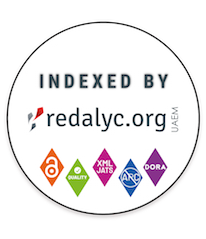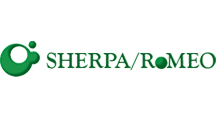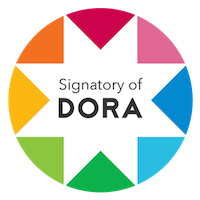Characterization of the nopal (Opuntia spp.) production system in the Huasteca region of Tamaulipas, Mexico
DOI:
https://doi.org/10.15517/am.2025.60442Keywords:
cactaceae, commercialization, area in production, family production unitsAbstract
Introduction. In Tamaulipas, Mexico, environmental conditions are suitable for nopal (Opuntia spp.) production; however, yields are lower than the national average. Objective. To characterize the nopal production system in the Huasteca Tamaulipeca region and identify the main issues that limit production. Materials and methods. A diagnosis of the nopal production system in the Huasteca Tamaulipeca region was conducted through 28 interviews with 65 questions, divided into three sections: a) producer identification, b) characterization of the family production unit, and c) technical-productive characterization and commercialization. Results. Producers’ ages ranged from 37 to 78 years, with an average schooling of 6.5 years. A total of 32 % of the producers do not receive technical assistance, 57.1 % work on land under the ejido system (communal land tenure), 82.1 % sell their products to intermediaries, and 100 % do not use agricultural machinery for their activities. Conclusions. Most nopal producers in the Huasteca Tamaulipeca region are older adults with experience in nopal cultivation. Nopal production in the region is carried out traditionally, under rainfed conditions, without infrastructure, and with little technical support. The main issues identified were low prices due to limited product demand and a lack of technical assistance for crop management.
Downloads
References
Aguilar-Barojas, S. (2005). Fórmulas para el cálculo de la muestra en investigaciones de salud. Salud en Tabasco, 11(1–2), 333–338. http://www.redalyc.org/articulo.oa?id=48711206
Aguilar Becerril, G., & Peña Valdivia, C. B. (2006). Alteraciones fisiológicas provocadas por sequía en nopal (Opuntia ficus-indica). Revista Fitotecnia Mexicana, 29(3), 231–237. https://revistafitotecniamexicana.org/documentos/29-3/7a.pdf
Aguilar-Sánchez, G. (2020). Diferenciación de tierras agrícolas en el municipio de Tequis-quiapan, Querétaro. Revista Geográfica de América Central, 65(2), 121–143. https://doi.org/10.15359/rgac.65-2.5
Arriaga Cabrera, L., Espinoza Rodríguez, J. M., Aguilar Zúñiga, C., Martínez Romero, E., Gómez Mendoza, L., & Loa Loza, E. (Coord.). (2000). Regiones terrestres prioritarias de México. Comisión Nacional para el Conocimiento y Uso de la Biodiversidad (CONABIO). https://www.biodiversitylibrary.org/item/205991#page/6/mode/1up
Ayala-Escobar, V., Yáñez-Morales, M. de J., Braun, U., Groenewald, J. Z., & Crous, P. W. (2006). Pseudocercospora opuntiae sp. nov., the causal organism of cactus leaf spot in Mexico. Fungal Diversity, 21, 1–9. https://research.wur.nl/en/publications/pseudocercospora-opuntiae-sp-nov-the-causal-organism-of-cactus-le
Beccaro, G. L., Bonvegna, L., Donno, D., Mellano, M. G., Cerutti, A. K., Nieddu, G., Chessa, I., & Bounous, G. (2015). Opuntia spp. biodiversity conservation and utilization on the Cape Verde Islands. Genetic Resources and Crop Evolution, 62, 21–33. https://doi.org/10.1007/s10722-014-0133-2
Bravo Hollis, H. (1978). Las cactáceas de México. Universidad Nacional Autónoma de México.
Bravo Hollis, H., & Scheinvar, L. (1999). El interesante mundo de las cactáceas. Fondo de Cultura Económica.
Callejas-Juárez, N., Matus-Gardea, J. A., García-Salazar, J. A., Martínez-Damián, M. Á., & Salas-González, J. M. (2009). Situación actual y perspectivas de mercado para la tuna, el nopalito y derivados en el Estado de México, 2006. Agrociencia, 43(1), 73–82. https://agrociencia-colpos.org/index.php/agrociencia/article/view/698/698
Castillo, T. H. (2016). Producción de nopal verdura de riego, a cielo abierto, en Tamaulipas [Boletín electrónico]. Centro de Investigación Regional Noreste (CIRNE), & Instituto Nacional de Investigaciones Forestales, Agrícolas y Pecuarias (INIFAP).
DeFelice, M. S. (2004). Prickly Pear Cactus, Opuntia spp.—A Spine-Tingling Tale. Weed Technology, 18(3), 869–877. https://doi.org/10.1614/WT-04-134
Financiera Rural. (2011). Monografía del nopal y la tuna. Dirección General Adjunta de Planeación Estratégica y Análisis Sectorial. https://www.yumpu.com/es/document/read/17605434/monografia-del-nopal-y-la-tuna-financiera-rural
Guzmán, U., Arias, S., & Dávila, A. (2003). Catálogo de cactáceas mexicanas. Universidad Nacional Autónoma de México (UNAM), & Comisión Nacional para el Conocimiento y Uso de la Biodiversidad (CONABIO).
Instituto para la Innovación Tecnológica en la Agricultura. (s. f.). Producción de nopal en túnel. Recuperado el 5 de abril, 2024, de https://www.intagri.com/articulos/horticultura-protegida/produccion-de-nopal-en-tunel
Jacobsen, S.-E., Sørensen, M., Pedersen, S. M., & Weiner, J. (2015). Using our agrobiodiversity: plant-based solutions to feed the world. Agronomy for Sustainable Development, 35, 1217–1235. https://doi.org/10.1007/s13593-015-0325-y
Jiménez Sierra, C. L. (2011). Las cactáceas mexicanas y los riesgos que enfrentan. Revista Digital Universitaria, 12(1), 1–23. https://www.ru.tic.unam.mx/bitstream/handle/123456789/1844/art04_2011.pdf?sequence=1&isAllowed=y
López-Flores, M. M., & Omaña-Silvestre, J. M. (2023). Modelo de desarrollo para el aprovechamiento de nopal verdura en Milpa Alta, Ciudad de México. Agricultura, Sociedad y Desarrollo, 20(4), 408–424. https://doi.org/10.22231/asyd.v20i4.1417
Luna, V. J. (2011). Producción invernal de nopal verdura [Folleto para productores]. Centro de Investigación Regional Noreste (CIRNE), & Instituto Nacional de Investigaciones Forestales, Agrícolas y Pecuarias (INIFAP).
Maki-Díaz, G., Peña-Valdivia, C. B., García-Nava, R., Arévalo-Galarza, M. L., Calderón-Zavala, G., & Anaya-Rosales, S. (2015). Características físicas y químicas de nopal verdura (Opuntia ficus-indica) para exportación y consumo nacional. Agrociencia, 49(1), 31–51. https://agrociencia-colpos.org/index.php/agrociencia/article/view/1128/1128
Márquez-Berber, S. R., Torcuato-Calderón, C., Almaguer-Vargas, G., Colinas-León, M. T., & Gardezi, A. K. (2012). El sistema productivo del nopal tunero (Opuntia albicarpa y O. megacantha) en Axapusco, Estado de México. Problemática y alternativas. Revista Chapingo Serie Horticultura, 18(1), 81–93. https://doi.org/10.5154/r.rchsh.2012.18.006
Mochiah, M. B., Baidoo, P. K., & Owusu-Akyaw, M. (2011). Influence of different nutrient applications on insect populations and damage to cabbage. Journal of Applied Biosciences, 38, 2564–2572.
Muñoz-Urias, A., Palomino-Hasbach, G., Terrazas, T., García-Velázquez, A., & Pimienta-Barrios, E. (2008). Variación anatómica y morfológica en especies y entre poblaciones de Opuntia en la porción sur del Desierto Chihuahuense. Boletín de la Sociedad Botánica de México, 83, 1–11. https://www.scielo.org.mx/pdf/bsbm/n83/n83a1.pdf
Murillo Amador, B., Troyo Diéguez, E., & García Hernández, J. L. (Eds.). (2003). El nopal, alternativa para la agricultura de zonas áridas en el siglo XXI. Centro de Investigaciones Biológicas del Noroeste. https://cibnor.repositorioinstitucional.mx/jspui/bitstream/1001/2071/1/El%20nopal%2c%20alternativa%20para%20la%20agricultura%20de%20zonas%20%c3%a1ridas%20en%20el%20siglo%20XXI.PDF
Peña-Valdivia, C. B., Trejo, C., Arroyo-Peña, V. B., Sánchez Urdaneta, A. B., & Balois Morales, R. (2012). Diversity of unavailable polysaccharides and dietary fiber in domesticated nopalito and cactus pear fruit (Opuntia spp.). Chemistry & Biodiversity, 9(8), 1599–1610. https://doi.org/10.1002/cbdv.201200047
Powell, A. M., & Weedin J. F. (2004). Cacti of the TransPecos and Adjacent Areas. Texas Tech University Press.
Quezada-Salinas, A., Sandoval-Islas, J. S., Alvarado-Rosales, D., & Cárdenas-Soriano, E. (2006). Etiología de la mancha negra del nopal (Opuntia ficus-indica Mill) en Tlalnepantla, Morelos, México. Agrociencia, 40(5), 641–653. https://agrociencia-colpos.org/index.php/agrociencia/article/view/496/496
Reyes-Agüero, J. A., Aguirre-Rivera, J. R., & Hernández, H. M. (2005). Systematic notes and a detailed description of Opuntia ficus-indica (L.) Mill. (CACTACEAE). Agrociencia, 39(4), 395–408. https://agrociencia-colpos.org/index.php/agrociencia/article/view/403/403
Reyes Santiago, J. (s. f.). Conservación y restauración de cactáceas y otras plantas suculentas mexicanas. Manual práctico. Comisión Nacional Forestal. https://www.conafor.gob.mx/biblioteca/Manual_Practico-Conservacionyrestauracion-cactaceas_suculentas.pdf
Reyes-Terrazas, A. S., Flores-Sánchez, D., Navarro-Garza, H., Pérez-Olvera, M. A., & Almaguer-Vargas, G. (2023). Características y retos del sistema de cultivo nopal verdura en Cuautlacingo, Otumba. Revista Mexicana de Ciencias Agrícolas, 14(2), 211–222. https://doi.org/10.29312/remexca.v14i2.3079
Robles Contreras, F., Macías Duarte, R., & Grijalva Contreras, R. L. (2008). Tecnología de producción de nopal verdura para el noroeste de Sonora [Folleto técnico]. Instituto Nacional de Investigaciones Forestales, Agrícolas y Pecuarias.
Rojas Soriano, R. (2013). Guía para realizar investigaciones sociales. Plaza y Valdés Editores. https://raulrojassoriano.com/cuallitlanezi/wp-content/themes/raulrojassoriano/assets/libros/guia-realizar-investigaciones-sociales-rojas-soriano.pdf
Sandoval-Trujillo, S. J., Ramírez-Cortés, V., & Hernández-Bonilla, B. E. (2018). Análisis de los incentivos para la producción del nopal en Teotihuacán. Vinculatégica Efan, 4(2), 382–390. https://doi.org/10.29105/vtga4.1-779
Secretaría de Agricultura y Desarrollo Rural. (2017, marzo 9). El sector agropecuario fundamental embajador de México en el mundo. Gobierno de México. https://www.gob.mx/agricultura/es/articulos/el-sector-agropecuario-fundamental-embajador-de-mexico-en-el-mundo
Secretaría de Medio Ambiente y Recursos Naturales. (2016, octubre 10). Cactáceas, riqueza natural de México. Gobierno de México. https://www.gob.mx/semarnat/articulos/cactaceas-riqueza-natural-de-mexico#:~:text=En%20M%C3%A9xico%2C%20las%20cact%C3%A1ceas%20se,propios%20o%20exclusivos%20del%20pa%C3%ADs
Servicio de Información Agroalimentaria y Pesquera. (2020). Anuario estadístico de la producción agrícola. https://www.gob.mx/siap/acciones-y-programas/produccion-agricola-33119
Sturges, H. A. (1926). The choice of a class interval. Journal of the American Statistical Association, 21(153), 65–66. https://doi.org/10.1080/01621459.1926.10502161
Valencia-Sandoval, K., Brambila-Paz, J. de J., & Mora-Flores, J. S. (2010). Evaluación del nopal verdura como alimento funcional mediante opciones reales. Agrociencia, 44(8), 955–963.
Vázquez Alvarado, R. E., Olivares Sáenz, E., Zavala García, F., & Valdez Cepeda, R. D. (2006). Utilization of manure and fertilizers to improve the productivity of Cactus pear (Opuntia spp.) a review. Acta Horticulturae, 728, 151–158. https://doi.org/10.17660/ActaHortic.2006.728.20
Wallace, R. S., & Gibson, A. C. (2002). Cacti: Biology and uses. California Scholarship Online. https://doi.org/10.1525/california/9780520231573.003.0001

Downloads
Additional Files
Published
How to Cite
Issue
Section
License
Copyright (c) 2025 William Zárate-Martínez, Moisés Felipe Victoriano, Juan Samuel Guadalupe Jesús Alcalá Rico, Adán Hernández Hernández, Bulmaro Méndez Argüello, José Luis Arispe Vázquez

This work is licensed under a Creative Commons Attribution-NonCommercial-NoDerivatives 4.0 International License.
1. Proposed policy for open access journals
Authors who publish in this journal accept the following conditions:
a. Authors retain the copyright and assign to the journal the right to the first publication, with the work registered under the attribution, non-commercial and no-derivative license from Creative Commons, which allows third parties to use what has been published as long as they mention the authorship of the work and upon first publication in this journal, the work may not be used for commercial purposes and the publications may not be used to remix, transform or create another work.
b. Authors may enter into additional independent contractual arrangements for the non-exclusive distribution of the version of the article published in this journal (e.g., including it in an institutional repository or publishing it in a book) provided that they clearly indicate that the work was first published in this journal.
c. Authors are permitted and encouraged to publish their work on the Internet (e.g. on institutional or personal pages) before and during the review and publication process, as it may lead to productive exchanges and faster and wider dissemination of published work (see The Effect of Open Access).























